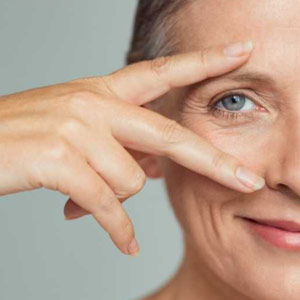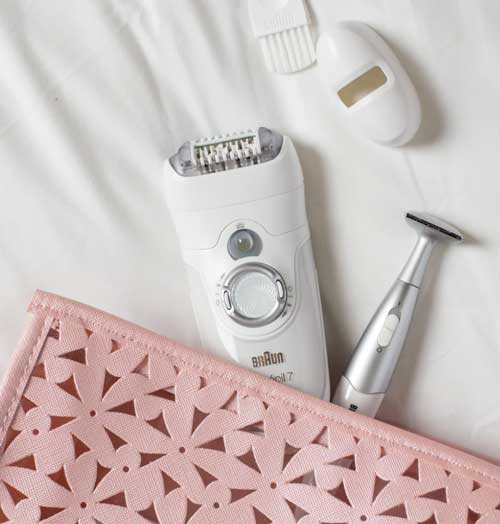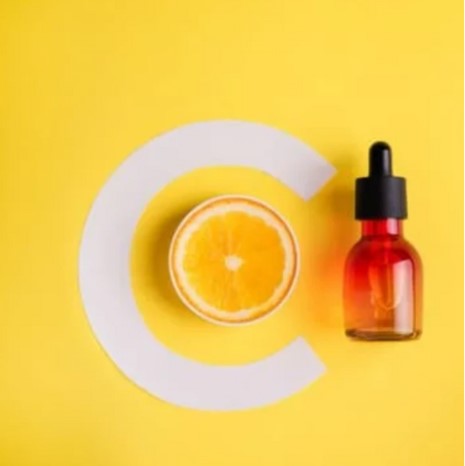A Complete Guide For Ingredients To Avoid In Sunscreens
We know that sun exposure causes most skin cancers. That is proven. We have also proven that sunscreen helps prevent skin cancer. Two important Australian studies showed that melanoma was reduced by 50 percent and squamous cell carcinoma by 40 percent in those who used sunscreen regularly. That’s huge.
It’s important to protect our skin from too much sun exposure. But you’ve perhaps heard as well that sunscreen can also contain toxic ingredients. Is sunscreen safe? Can we use it every day? Well, it depends on what's in it.
When it comes to choosing a sunscreen the selections seem endless. Unfortunately, not all of the sunscreens are made equally. It’s not as easy as simply going to the store and purchasing an SPF off the shelf. There are many aspects to consider when purchasing the safest and most effective sunscreens.
We did specific digging to find the ingredients you should avoid in your sunscreen, and the safer alternatives you should try instead. Read about them below.
- How Does Sunscreen Work ?
- Why Physical (Mineral) Sunscreen Is Safer?
- Ingredients To Avoid In Sunscreens
- Zinc Oxide is Non-toxic And Clean Alternative
- Homemade Sunscreens
- FAQ - Questions & Answers
- The Bottom Line...
How Does Sunscreen Work ?
There are two main types of sunscreen - physical sunscreens and chemical sunscreens.
Physical, as the name refers, is sitting physically on top of the skin layer and does not get absorbed into it.
And chemical, as opposed to physical, contains chemicals that get absorbed into your skin and eliminating sun rays by creating chemical reactions. (Keep reading to discover what are those chemicals and why to avoid them)
So as you can already understand from the definition, chemical sunscreen is more harmful and might have bigger long term unwanted health effects.
Physical sunscreen, that often also called sunblock or mineral sunscreen, is a safer option. They use mineral-based ingredients, like titanium dioxide and zinc oxide to block UV rays.
Why Physical (Mineral) Sunscreen Is Safer?
So, as we mentioned before physical sunscreens create a barrier on the skin that filter out UV rays with mineral shield, while chemical sunscreens absorb and scatter the sun's UV rays.
So why physical one considered to be safer?
1. Physical sunscreen starts protecting your skin immediately after application. While chemical one is only after about 20 minutes.
2. Both can protect the full spectrum of ultraviolet radiation. But the physical one does it more efficiently.
3. Physical sunscreen is less likely to irritate sensitive skin or other skin conditions like acne, blemishes, rosacea, eczema and more.
4. It's common to hear that one of the cons of a physical sunscreen is that sometimes it leaves a whitish visible layer on the skin. But that was once. Today physical sunscreen can be just as invisible as a conventional chemical sunscreen since the particles of the mineral can be small enough not to be seen at all.

Ingredients To Avoid In Sunscreens
Oxybenzone (Benzophenone-3)
Oxybenzone is one of the most common chemical filters in sunscreens and it’s also a penetration enhancer, a chemical that helps other chemicals absorb into the skin.
The Center for Disease Control published a report that approximately 97% of the people tested have oxybenzone present in their urine. (Source)
Oxybenzone was also recognized in nearly 70 percent of the non-mineral sunscreens in the EWGs 2016 sunscreen database. (Source)
This is particularly disturbing since oxybenzone has been linked to hormone disruption, allergies, cell damage, and low birth weight in baby girls whose mothers are exposed during pregnancy.
The EWG warns against using oxybenzone, especially on children or breastfeeding/pregnant women.
Avobenzone (benzophenone)
Similar to oxybenzone, Avobenzone is a chemical filter that also helps other ingredients to be penetrated more readily.
This common sunscreen ingredient is shown to have hormone-mimicking effects on laboratory animals, which can be unsafe to humans and wildlife, should they come into contact with the chemical once it gets into the water.
It has been found in humans, including blood, urine and mothers’ milk samples.
(Source)
Retinyl Palmitate (Vitamin A)
Retinyl Palmitate is a form of Vitamin A. It is commonly used in sunscreens to reduce the aging effects of UV rays. However, when exposed to UV rays the retinol compounds break down and become harsh free radicals. These free radicals wreak havoc on cells, damaging DNA and potentially paving the way for cancer. FDA studies have shown that Retinyl Palmitate can actually speed up the production of cancerous cells.
(More research)
Octinoxate (Octyl methoxycinnamate)
Another commonly used ingredient in sunscreens is Octinoxate, which mimics hormone activity causing disruptions in the reproductive and thyroid systems.
This ingredient also produces free radicals causing cell damage and early aging.
Octinoxate is also extremely toxic to wildlife causing similar hormone disruptions in ocean animals. It is among the list of ingredients banned in Hawaii.
Nano Particles
Although we have mentioned earlier that physical sunscreens (sunblocks) are safer because they use minerals as a physical shield that stays on the surface and does not penetrate layers of the skin. It's important to mention that it depends on the size of the particles used.
There are two minerals often used for this purpose: zinc oxide and titanium dioxide. They are considered to provide reliable sun protection with few health concerns and don't break down in the sun. A long time ago, those sunblocks were very thick and left a white chalky layer on the skin, therefore not so convenient for everyday use.
To create sunscreens that are invisible and effective, manufacturers use nanosize versions of these two minerals. A nanoparticle is a particle with a size of less than 100nm. The problem is that nanosized minerals are penetrating the layers of the skin.
It is safer to use non-nano zinc oxide particles bigger than 100nm but smaller than 200nm. Zinc particles bigger than 200nm are not so efficient in blocking the sun and leave a thick white layer on the skin.
Disclaimer: we are not advising you stop using sunscreen altogether, but rather taking a closer look at any brands you may be currently using and looking for safer alternatives. Protection from UV rays is vital, but the damage to our internal bodies should NOT be a part of the process!

Zinc Oxide is Non-toxic and Clean Alternative
Unlike conventional skincare products that use chemical UV-filters, mineral sunscreens use mineral filters like zinc oxide or titanium dioxide that defend the skin by forming a barrier that reflects UVA and UVB like a mirror. They usually provide broad-spectrum protection, don’t absorb the skin, are stable and don’t require you to wait 20 minutes before sun exposure.
Zinc Oxide Benefits
Zinc oxide has been found to offer protection against “broad spectrum ultraviolet rays” (UVA/UVB), which is not always the case with chemical sunscreens that only block one type of UV light.
Today zinc oxide is added to many more skincare products beyond sunscreen — it’s also an ingredient in beauty lotions or foundations including mineral concealers, makeup, moisturizers, BB creams and anti-aging formulas.
For the treatment of acne, zinc oxide is usually combined with other anti-bacterial or anti-inflammatory zinc substances, including antioxidants, zinc gluconate or zinc sulfate, and sometimes antibacterial agents.
Much research shows that zinc oxide helps to aid in new tissue development, skin healing, repair work of wounds, and prevention of inflammation.
Zinc Oxide Vs. Titanium Dioxide
The answer is Zinc Oxide is a nontoxic and more effective sunscreen than Titanium Dioxide based on physical chemistry and biological effects. Titanium Dioxide’s UV absorption spectrum is not as broad spectrum in UVB and UVA as is Zinc Oxide; Zinc Oxide is a better absorber across more wavelengths which results in better, safer protection for you and your family.
Titanium Dioxide creates more free radicals that do oxidative loss to your body and skin cells, and increases aging processes. Zinc Oxide is the only sunscreen active ingredient that’s been tested and FDA permitted for use on babies less than 6 months of age and children – this shows its high degree of safety.
Titanium Dioxide has titanium, which is just another toxic weighty metal in our bodies; Zinc is a critical mineral nutrient that keeps us healthy. You won’t find Titanium in your vitamins, but you definitely will find Zinc!
RECOMMENDED READING:
● When Should You See A Dermatologist

Homemade Sunscreen
Another option is to make your homemade sunscreen using natural SPF ingredients. Some oils and botanical butters are great to protect the skin during and after sun.
Coconut Oil Sunscreen
Ingredients :
● ½ Cup Virgin Coconut Oil
● 1 Tablespoon Red Raspberry Seed Oil
● 2 Tablespoons Non Nano Zinc Oxide
● Optional: 15 Drops Essential Oils (I used Carrot Seed & Lavender)
How To:
Beat coconut oil up in a mixer or food processor. Carefully add the zinc oxide (you don’t want to inhale it!), red raspberry seed oil and essential oils. Once the zinc oxide and oils are mixed well pour them into a small container.
Shea Butter Sunscreen
Ingredients:
2 oz Unrefined Shea Butter
1 oz Coconut Oil
1 oz Jojoba Oil
1 oz Zinc Oxide Powder
Optional: 10 drops of lavender essential oil
How to:
Melt the coconut oil and Shea Butter in a double boiler over low heat. Once melted, take away from the heat and mix in jojoba oil. Mixing in the zinc oxide powder slowly, making sure it is entirely dissolved before adding more. Use an electric food mixer to blend everything evenly, then set your sunscreen in the fridge to cool off for a few hours (you don’t need to store it in the fridge, a cool place will do). Once it’s cool and stable, but not completely solid, use an electric mixer and whip it for a few minutes, to thoroughly blend everything again and to get a nice light and soft texture.
There are many negative health effects associated with commonly used chemical sunscreen ingredients. With the extensive availability of natural mineral sunscreens on the market now, please consider choosing safer sunscreens for your family.

FAQ - Related Questions & Answers
● Does sunscreen cause cancer?
No study can confirm that sunscreen causes cancer. But there are many studies on specific ingredients that might be potentially harmful and eventually lead to some diseases. So take precautions and read ingredients.
● Which one goes first, sunscreen or moisturizer?
Moisturizer goes first. Sunscreen will always be the last product to apply. Except for the cases, your moisturizer already contains sufficient strength sun protection. In this case, you might skip your sunscreen at all.
● How often should I apply sunscreen?
Today, there are a lot of arguments about this question. Some will suggest applying every day regardless of the season or location. Indoors or outdoors, winter or summer. Some will not.
For us, this question requires a personal approach.
● Do you live in a hot climate?
● Are you exposed to the direct sun?
● Does your skin prone to pigmentation after exposure?
● Do you spend over 2 hours outdoors during the day?
If all your answers are YES, we would recommend wearing sunscreen every day, not necessarily full strength, but maybe something around 20 SFP will be enough. (of cause if you go to the beach, you probably want to apply around 50 SPF all over the whole body )
● Do I need to wear it indoors?
There are some types of rays you literally can't hide from…they can penetrate through windows when you're inside. Therefore, we will recommend wearing some light sunscreen if you have concerns related to aging (wrinkles, dark spots, etc.). If you don't like to apply sunscreen on top of your moisturizer or makeup, you might want to consider using a moisturizer with sunscreen inside.
● Does sunscreen prevent tanning?
It depends. Chemical sunscreen SPF 50 will block around 97% of the rays, while SPF 30 about 95%. Physical sunscreen (sunblock) - will block 100% of the rays.
Tanning considered to be beautiful, but it's essential to understand that it's a protective response of our skin to the rays. So make sure you're getting your suntan in a moderate, balanced way :)
The Bottom Line...
So as you see, picking right sunscreen should be a conscious, educated choice. Moreover, it recommended taking into consideration your skin condition, age, and level of exposure to the UV rays. Read the ingredients and make sure you do not follow labels only; many times, they are very misleading and comes to sell more than protect.




